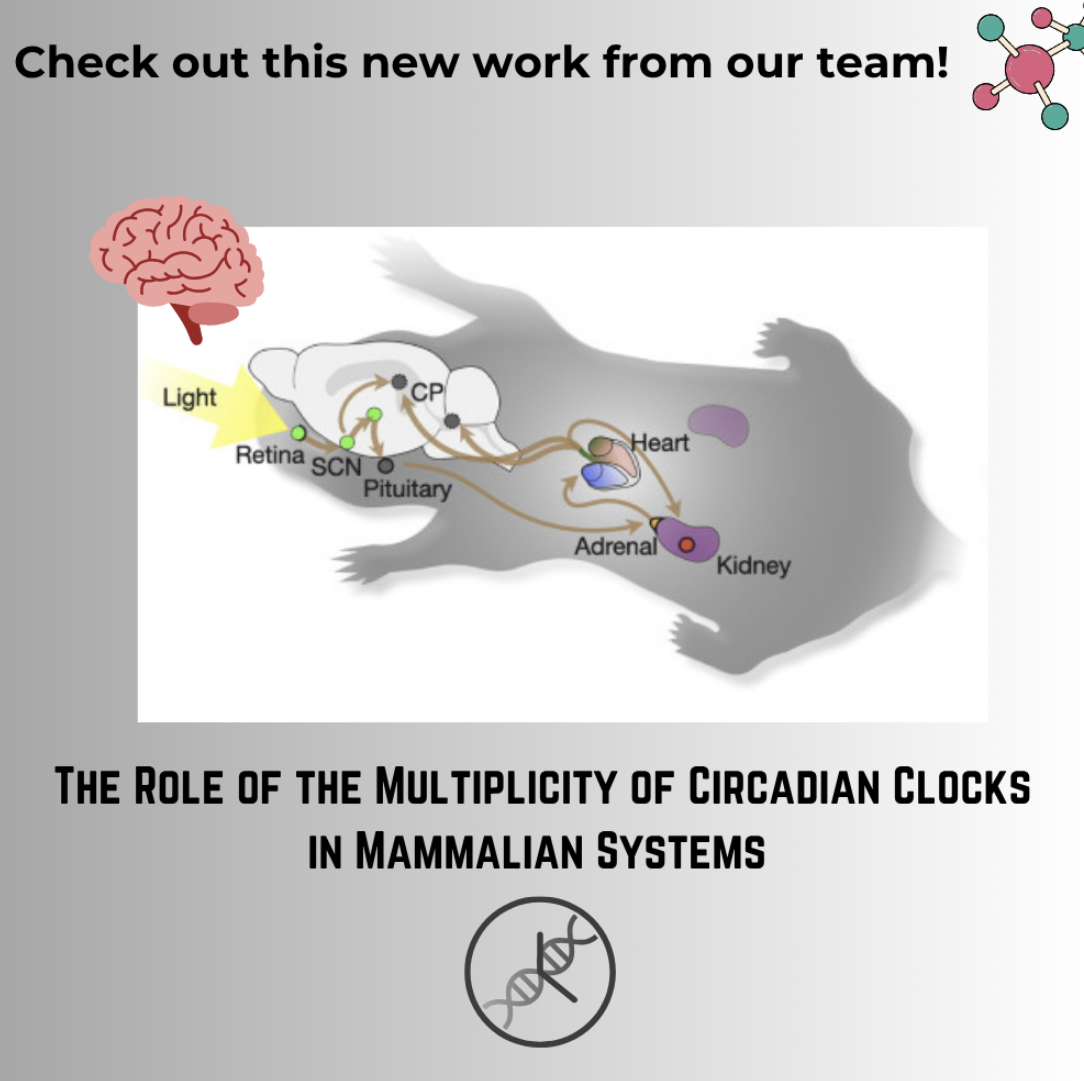[2025.04.09]
GIMBC professor, Jihwan Myung, and PhD students, Hélène Vitet and Vuong Truong, recently published a paper entitled “The Role of the Multiplicity of Circadian Clocks in Mammalian Systems”.
Circadian clocks in the body likely entrain themselves autonomously rather than being reset through a strict hierarchical mechanism. This self-sustained coordination, shaped by underlying cellular feedback loops, suggests that multi-layered biological data—omics—can offer more accurate predictions of circadian phase when analyzed through the lens of connectomics. Unlike traditional single-gene reporters, which provide limited insight into complex regulatory networks, omics-based approaches capture a systems-level view that better reflects the distributed nature of circadian timing. This work is a collaboration between the Braintime Lab at Taipei Medical University and the Institute for Theoretical Biology at Humboldt University, Berlin. We thank all members of the lab, including coauthors Hélène and Vuong, and our collaborator Bharath.
To read the full paper, visit this link: 10.1016/j.sleep.2025.106518
Myung J*, Vitet H, Truong VH, Ananthasubramaniam B (2025). The Role of the Multiplicity of Circadian Clocks in Mammalian Systems. Sleep Medicine, 131: 106518. DOI: 10.1016/j.sleep.2025.106518


